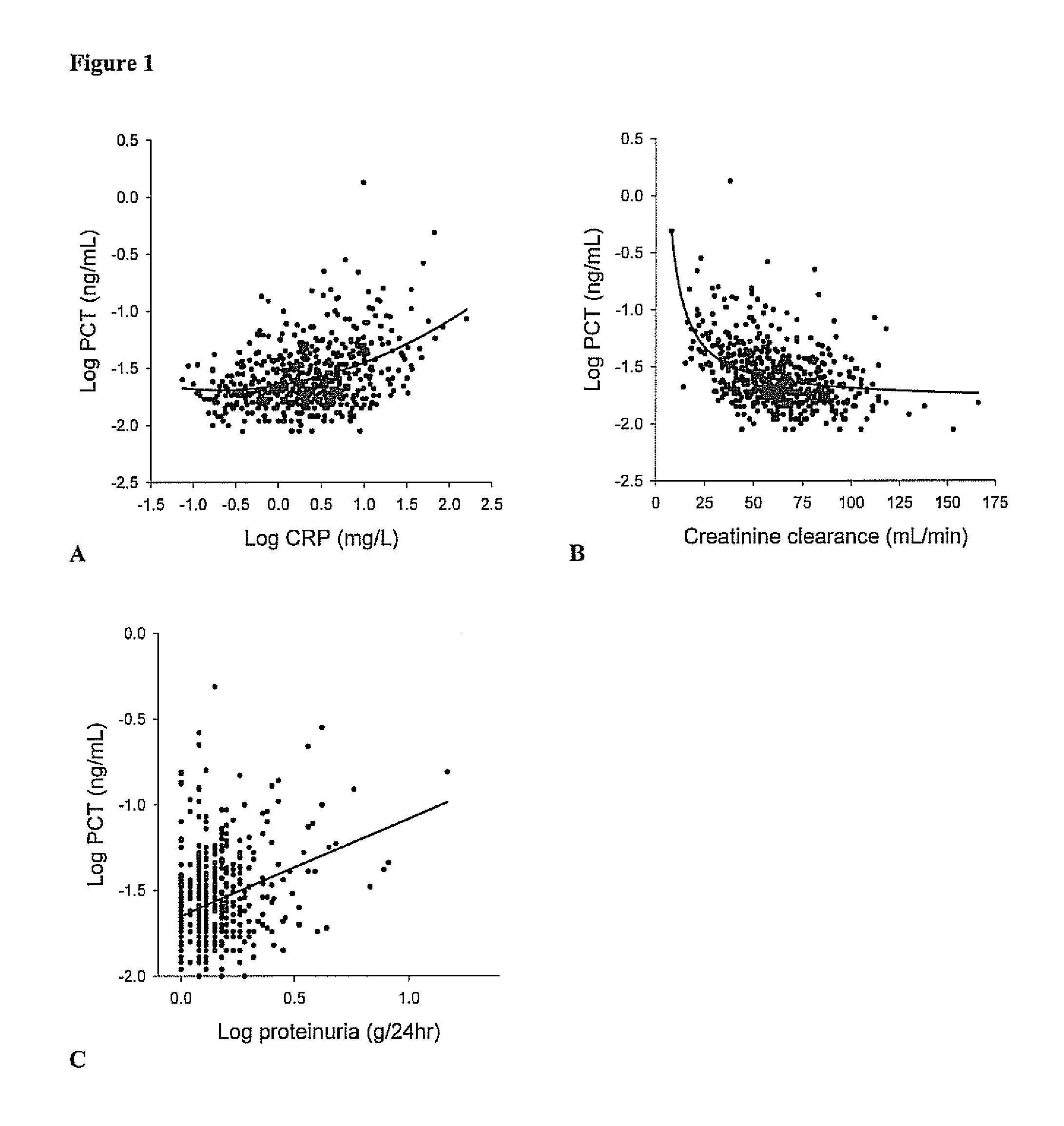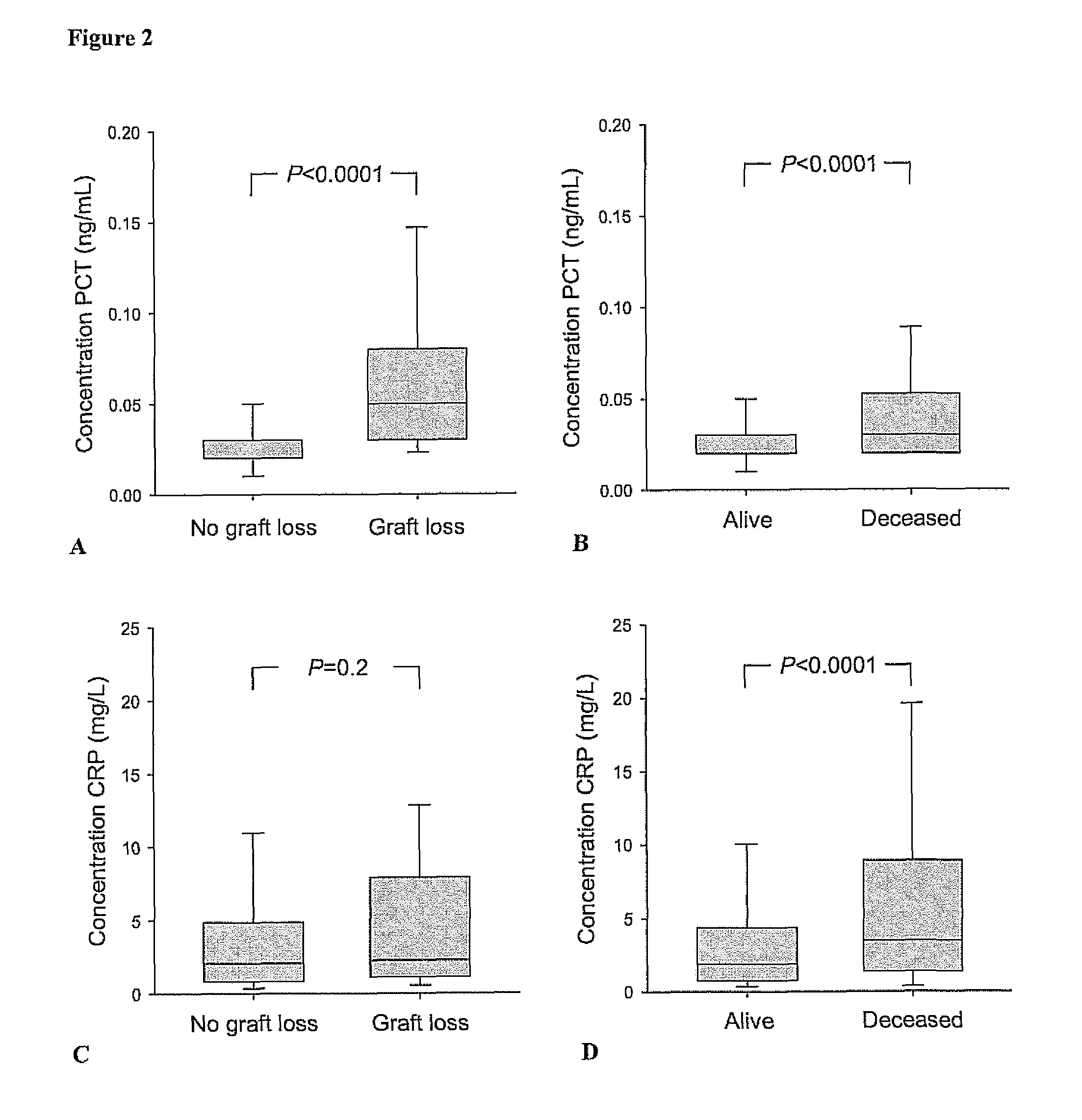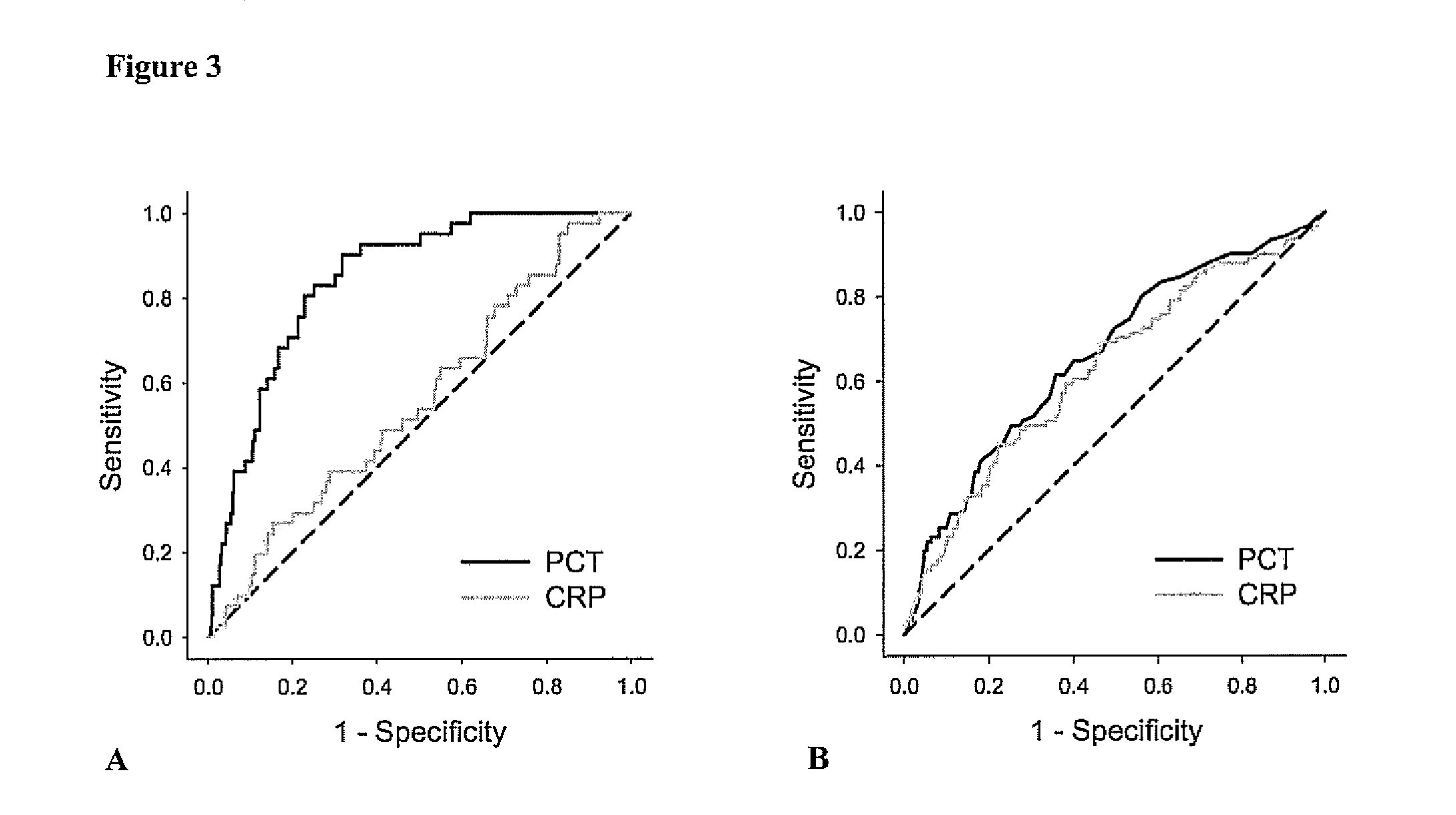Marker for graft failure and mortality
a biomarker and graft technology, applied in the field of biomarkers for graft failure and/or mortality, can solve the problems of no good biomarkers to predict the development of ctd, long-term graft survival has not paralleled this improvement,
- Summary
- Abstract
- Description
- Claims
- Application Information
AI Technical Summary
Benefits of technology
Problems solved by technology
Method used
Image
Examples
examples
Materials and Methods
Research Design and Subject
[0081]In this prospective cohort study all renal transplant recipients who visited the out-patient clinic between August 2001 and July 2003 and had a functioning graft for at least 1 year were eligible to participate at their next visit to the out-patient clinic. Recipients were asked to participate at a later visit to the out-patient clinic if they were ill or had signs of an infection. A total of 606 renal transplant recipients signed written informed consent from an eligible 847 (72% consent rate). The group that did not sign informed consent was comparable with the group that signed informed consent with respect to age, sex, body mass index, serum creatinine, creatinine clearance, and proteinuria. Two RTR were considered extreme outliers regarding the PCT concentration (FIG. 1) and were therefore excluded from analyses. Further details of this study have been published previously (van Ree R M, De Vries A P, Oterdoom L H et al. Abdo...
PUM
| Property | Measurement | Unit |
|---|---|---|
| concentration | aaaaa | aaaaa |
| concentrations | aaaaa | aaaaa |
| concentrations | aaaaa | aaaaa |
Abstract
Description
Claims
Application Information
 Login to View More
Login to View More - R&D
- Intellectual Property
- Life Sciences
- Materials
- Tech Scout
- Unparalleled Data Quality
- Higher Quality Content
- 60% Fewer Hallucinations
Browse by: Latest US Patents, China's latest patents, Technical Efficacy Thesaurus, Application Domain, Technology Topic, Popular Technical Reports.
© 2025 PatSnap. All rights reserved.Legal|Privacy policy|Modern Slavery Act Transparency Statement|Sitemap|About US| Contact US: help@patsnap.com



